Badami, Pattadakal and Aihole form a glorious trinity of architectural wonders dating back to the time of Early Chalukyas. They are the treasure houses of the Chalukyan Art and Architecture and claims a significant place in the architectural map of India. After visiting Badami, I hopped on a shared auto-rickshaw and reached to a small market set outside the Pattadakal temple complex.
Badami was the great capital of Chalukyan Empire. Read about Badami: A Beautiful Town Of The Cave Temples
At first glance, I felt like arriving at an undeveloped small village in a remote part of Karnataka. The place was deserted despite being a UNESCO World Heritage site. The market was consisted of 5-6 shops and few huts. All you could find was either food or coconut water. Very few tourists were there at the temple including some school children, a small group of foreign nationals, another group of Indian tourists and me. We rarely get such an opportunity to explore a tourist place in such a peaceful environment.
The temple complex is enclosed by the Malaprabha River from one side and a small village from the other side. The natural environment such as the range of hills, the Malaprabha River and the availability of sandstone in the nearby hills had favoured Pattadakal as an ideal place for the erection of beautiful temples.
Contents
Location of Pattadakal
Pattadakal is a small village situated on the left bank of the river Malaprabha in Bagalkot district of Northern Karnataka. It is about 22 km from Badami, the nearest town.
Entry Tickets: Rs 30 for Indian citizens. Rs 500 for foreigners. Rs 30 for camera. Entry is free for the children below 15 years of age.
Visiting Hours: Sunrise to Sunset Daily
What is Pattadakal Famous For?
Pattadakal is famous for a group of temples dating back to the Chalukya Empire. The temple complex at Pattadakal has approx 10 temples (9 Hindu and 1 Jain temple, outside temple complex) and 25 stone inscriptions erected during the times of the early Chalukya Kings. It was the place where the early Chalukya Kings of Badami were consecrated. It is considered as the meeting place of North and South Indian Architectural styles of the temple construction. There is also an eighth century Sanskrit inscription in Pattadakal written in both Nagri and the South Indian scripts indicating the confluence of two distinct cultures.
Beautiful Temples at Pattadakal Temple Complex
The temple complex is located on the left bank of Malaprabha River, where the river takes a northward course. People believe that the spots where the rivers flow northwards are quite sacred, for example, Varanasi. At such holy spots, many ancient temples were constructed. Pattadakal is also standing on such a sacred spot.
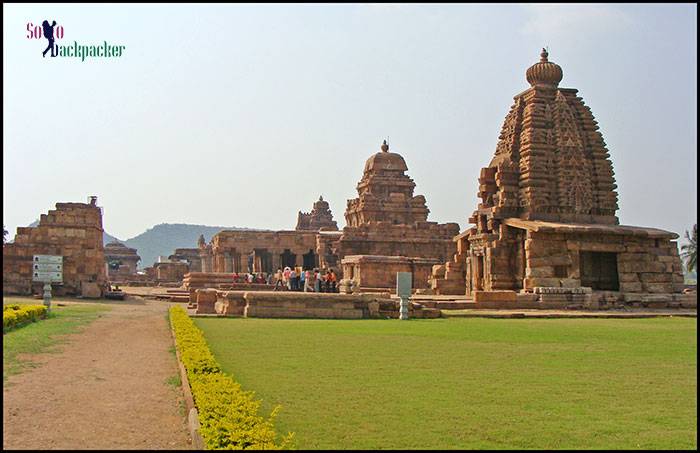
Eight temples dedicated to Lord Shiva, all facing east towards the river, constitute the main group of temples at Pattadakal. The prominent temples at Pattadakal are:
Virupaksha Temple
Among all the temples at Pattadakal, the temple of Virupaksha is the most significant. It is the only temple where regular worship is conducted. It faces east and stands close to the adjacent village. The temple was organically known as Lokeshwara, since it was erected by Lokamadadevi, queen of the Chalukyan King, Vikramaditya II. She constructed the temple of Virupaksha in about 740 AD to commemorate the victory of her husband over the Pallavas of Kanchi thrice.
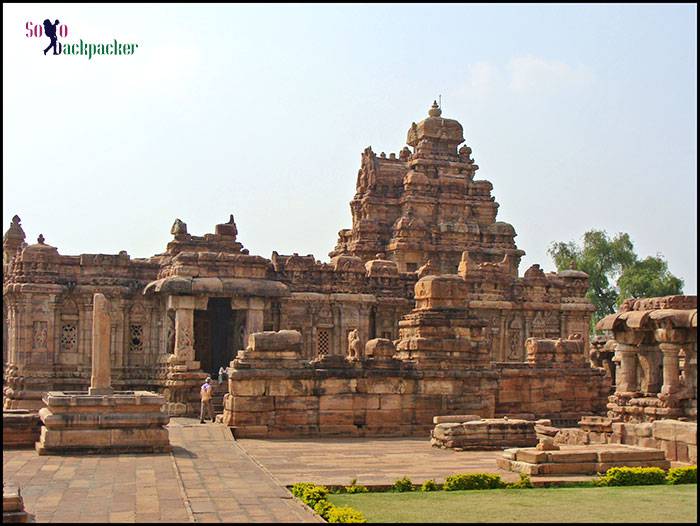
The temple was constructed in the Dravidian Style of Architecture. It has a separate Nandi Mandapa, three porches, one big hall, main shrine, two subsidiary shrines and a wide passage. The pinnacle over the superstructure above the temple resembles a coconut placed over a pot.
The temple architecture resembles with the Rajasimheshwara (now Kailashanatha) Temple of Kanchi which have made a deep impression on the mind of Vikramaditya II when he had been to Kanchi as a conqueror. The model of the temple is similar to the rock-cut Kailasha Temple at Ellora, which is built at the later date. It is believed that the Rashtrakuta Kings must have employed the artists who had worked in building Virupaksha Temple in Pattadakal.
The compound of the Virupaksha temple has two gates- one at the East and the other at the West. The Malaprabha river flows just before the eastern gate. A porch standing on the two heavy pillars leads an entrance into the compound from the east. Proceeding few steps further, there is a Nandi-mandapa, where a huge sculpture of Nandi is installed in black stone.
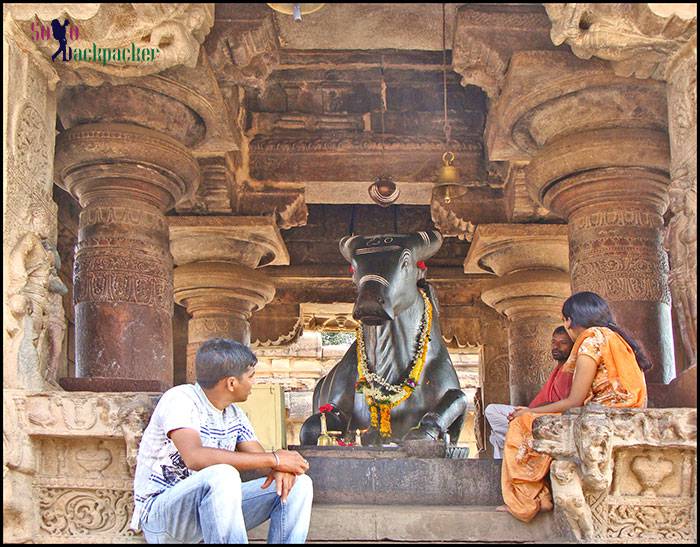
The hall of the temple is covered with flat sandstone slabs. Sculptures of a coiled Naga could be seen in the ceiling of the hall. The hall is decorated by carved pillars bearing the floral designs, the lion-face and a few interesting bas-reliefs from the popular scenes from the Mahabharat and Ramayan.
In a bas-relief carved out on the pillar, you can see Bhishma lying on the bed of arrows.
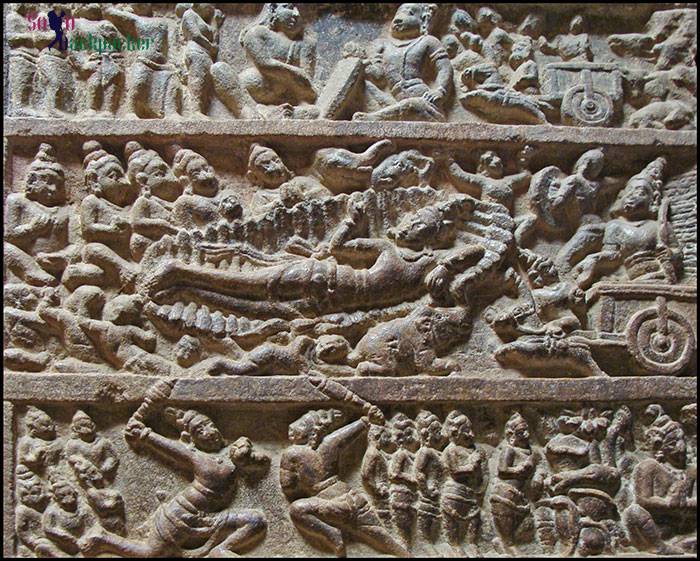
Another bas-relief shows the scenes from Ramayan. Lakshmana cuts off the nose of Surpanakha who goes to her elder brother Ravana and complains to him about Lakshmana’s act. Then demon Maricha appearance as the golden deer, Sita’s abduction by Ravana and Jatayu’s fight with Ravana is carved out subsequently.
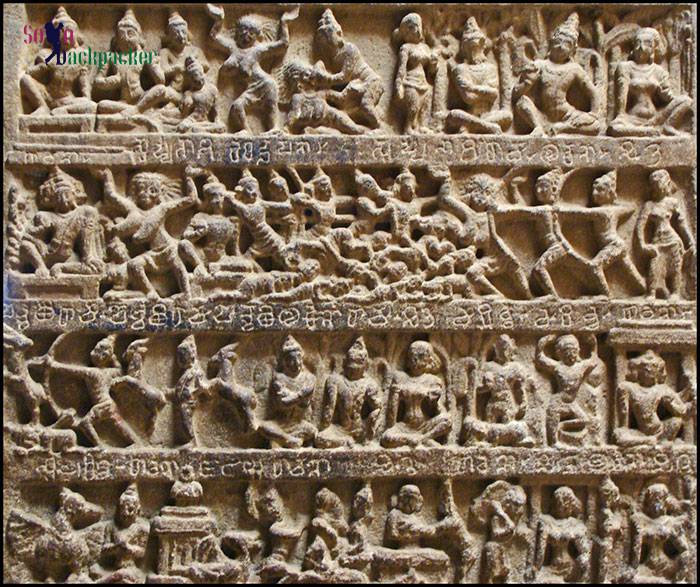
The Eastern, Northern and Southern Porch as well as the main shrine is decorated with bas-reliefs, stone sculptures, carved pillars and perforated stone windows. The sculptures on the outer walls depict the scenes of Lingodbhavamurti (God Shiva in the body of a linga), Nataraja (God Shiva in dancing form), Ravana fighting with Jatayu, Vishnu, Ardhanarishvara etc.
The main shrine door is flanked by Shaiva Dvarpalas. The linga of Virupaksha installed on the shrine is under worship.
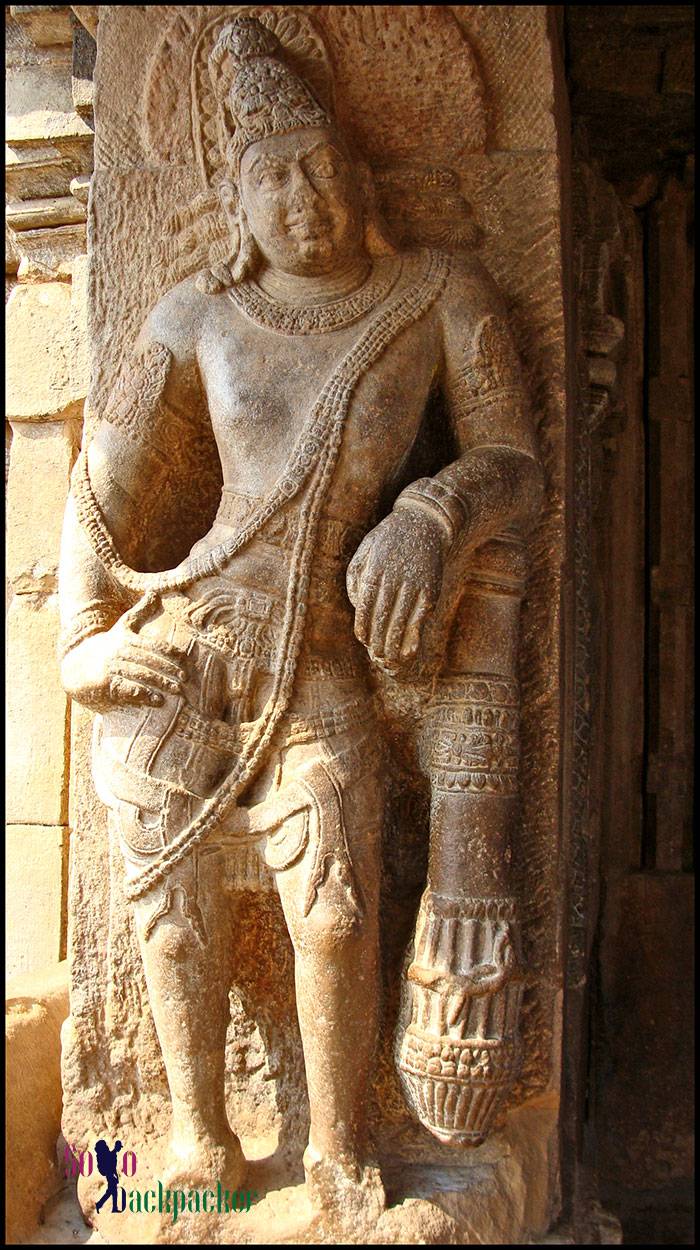
Mallikarjuna Temple
A small passage from the Virupaksha Temple leads to Mallikarjuna Temple. Built in 740 AD by Trailokyamahadevi, the second queen of Vikramaditya II, it was originally known as Trailokeshwara Temple. Trailokyamahadevi was the younger sister of the crowned Queen Lokamahadevi. Mallikarjuna Temple is similar to the Virupaksha Temple but smaller in size. The two temples, standing side by side and built simultaneously, closely resemble each other in their plan, elevation and decoration.
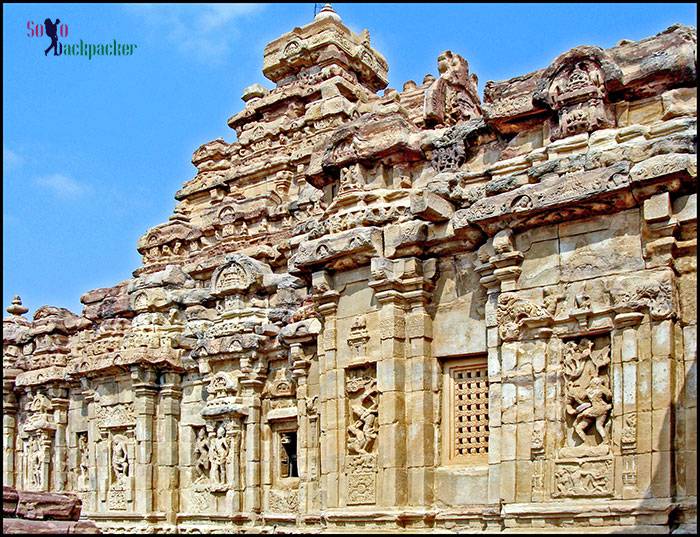
The dome of this temple is circular unlike that of Virupaksha Temple which is square. The ceiling has panels of Gajalakshmi and Nataraja with Parvathi. Pillars in the temple illustrate the birth and life of Krishna. There are sculptures of Mahishasuramardini and Ugranarasimha.
Sangameshvara Temple
Perhaps the oldest temple in Pattadakal, it was erected by the Chalukyan King Vijayaditya who installed in it a Shivalinga called Vijayeshvara after him. The temple faces east like other major temples at Pattadakal. The temple of Sangameshwara is big and rectangular in plan, but its design is very simple. It consists of the main shrine, two subsidiary shrines, a passage around the main shrine and a hall.
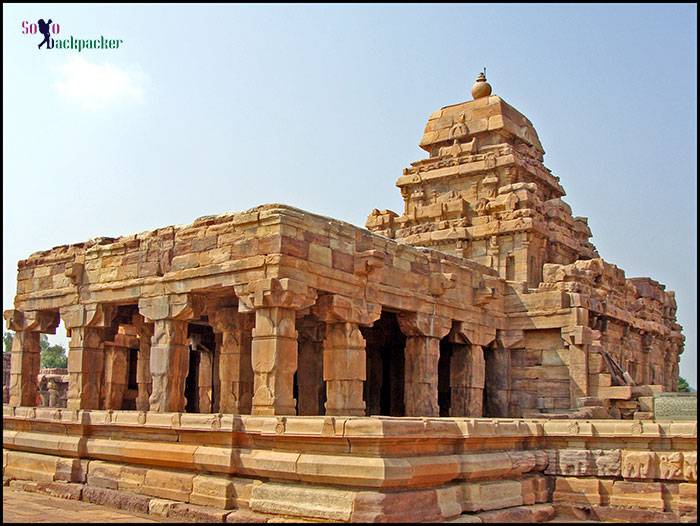
The shrine now contains a broken Linga. Unfinished images of sculptures of Vishnu, Varaha, Shiva accompanied by Nandi etc can be seen on the outer walls of the temple.
Galaganath Temple
Built of sandstone, the tower of this temple is in the North Indian style. The temple was probably never completed. Raised on a broad terrace, it consists of a hall and an inner hall surrounded on three sides by a passageway with projecting porches on three sides.
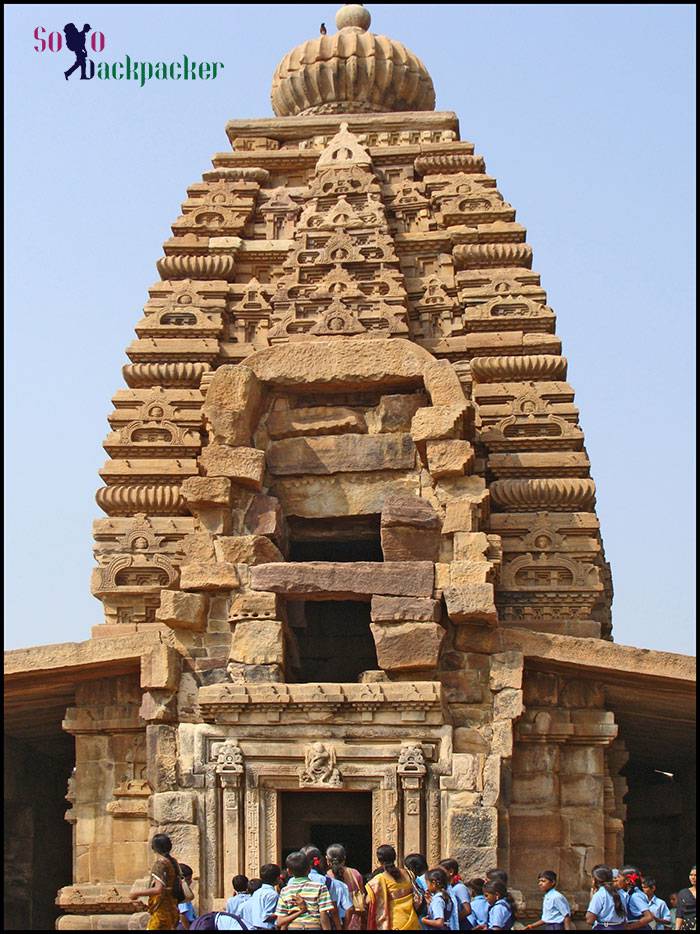
The temple includes a beautiful sculpture of Lord Shiva wearing a garland of skulls in the act of killing the demon Andhakasura. Lord Shiva has eight hands. One hand in the right side weilds a trident thrusting into the body of the demon Andhakasura. Another garland of human skulls passes over his body in the fashion of the sacred Janeu (thread).
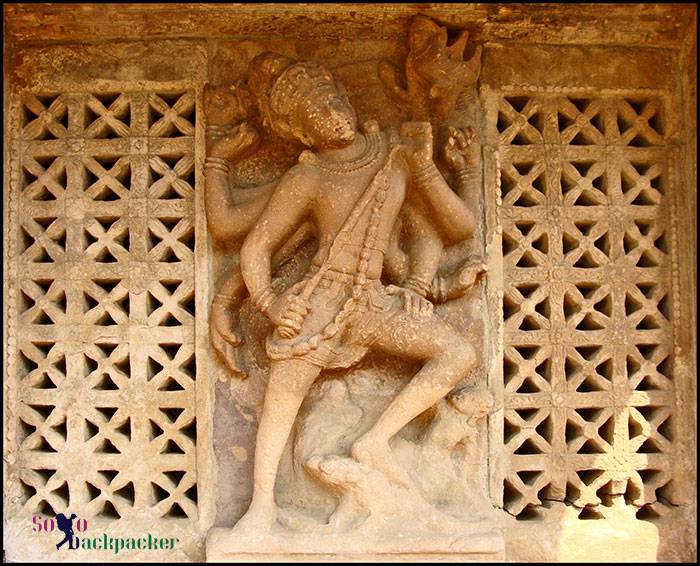
Other Temples
Other temples at Pattadakal Temple Complex include Kashi Vishweshvara Temple, Kadasiddhesvara Temple, Jambulinga Temple, Chandrashekhara Temple, Papanatha Temple and a Jain Temple.
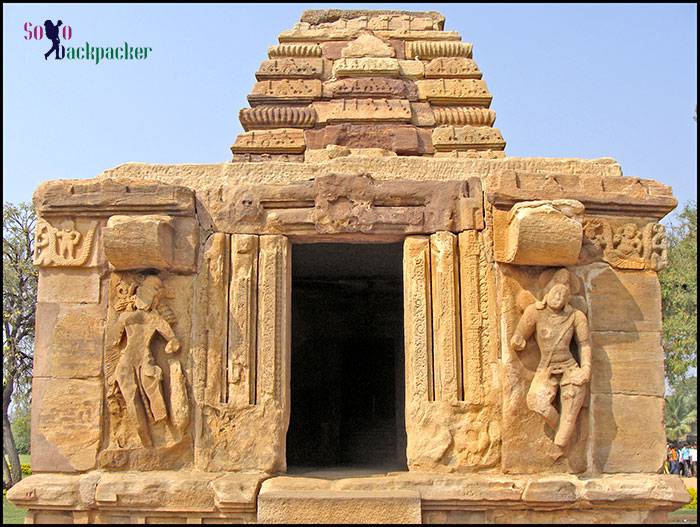
Kashi Vishweshvara Temple was built with a Northern type of vimana (upper portion) and faces east. A separately built up Nandimandapa stands before the main part of the temple, in a dilapidated condition. The superstructure of the temple has no pinnacle. The temple walls are decorated with sculptured figures, bas-reliefs and useful inscriptions.
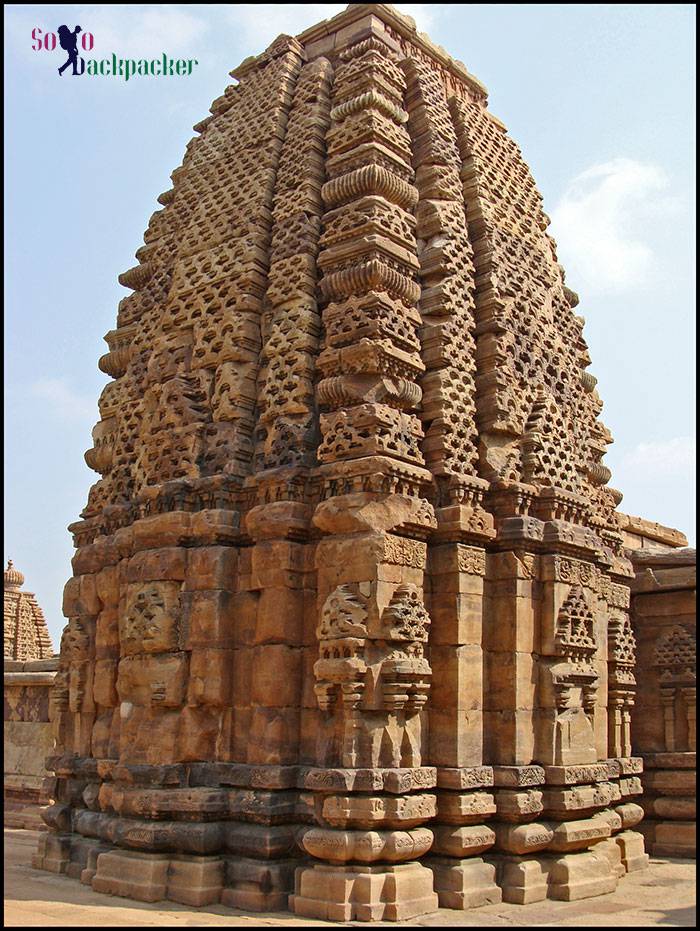
The temple of Jambulinga is located behind the Galaganath Temple. Only a small hall with no ceiling over it and shrine now constitute the temple. The temple faces East like other temples. A beautiful sculpture of Nataraja is placed on the eastern face of the tower over the door. Nataraja is accompanied by Parvati and Nandi.
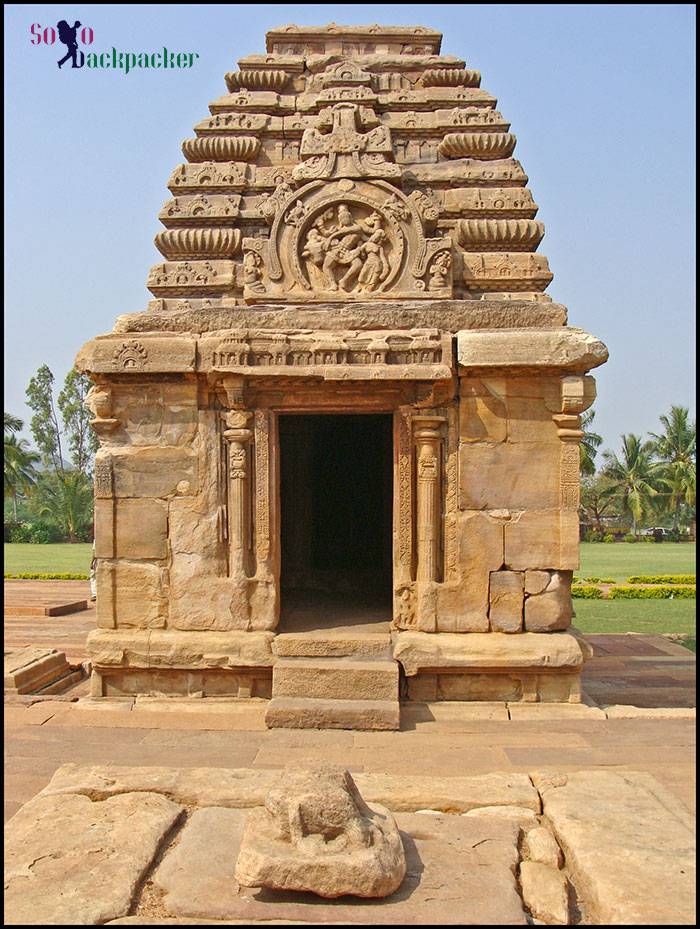
The temple of Papanatha (or Papanasha) is situated near the river Malaprabha, to the south of Virupaksha Temple. This temple consists of a porch, a hall, an inner hall, a shrine and a circular passage. The porch is located at the front part of the temple which faces east. The temple is adorned with decorative sculptures, bas reliefs and many inscriptions.
Read also about the impressive ruins of Hampi, the center of Vijayanagar Empire and another UNESCO World Heritage. Hampi: A Poetry in the stones
Who Built Pattadakal Temples?
The temples at Pattadakal were not constructed by a single person. Except for Virupaksha Temple and Mallikarjuna Temple, these temples are not coordinated in any way. They were built over many years (in 7th and 8th Century CE) by different rulers of the Chalukyan Empire.
Virupaksha Temple and Mallikarjuna Temple were erected by two sister-queens Lakamahadevi and Trailokyamahadevi respectively of the Chalukya king Vikramaditya II to commemorate the victory of their husband over Kanchi, the capital of the Pallavas, thrice. Sangameshvara Temple was built by the Chalukyan King Vijayaditya.
Most probably, the site of Pattadakal have served as a coronation place for the early Chalukyas. Pattadakal was virtually abandoned after the downfall of the Chalukya Dynasty.
Best Time to Visit Pattadakal
Pattadakal can be visited throughout the year, however, the most favourable season is from October to March in pleasant weather during the mild winters. The Summer season from the first week of April to the last week of June is extremely hot.
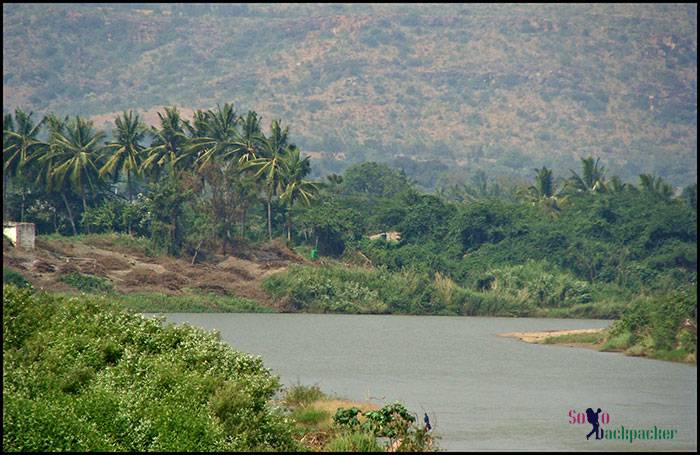
July to September is the time for moderate to excessive rains during the monsoon. Sometimes Malaprabha River gets flooded during the monsoon, and water gushes into the temple complex. The temples remain out of bound for the tourists during the flood conditions. Unfortunately, the repeated flood takes toll on the longevity of the heritage site.
How to Reach Pattadakal?
Pattadakal is about 22 km from Badami. You have to first reach Badami from anywhere else. There are two routes from Badami to Pattadakal. The first one is via Badami Railway Station and the second one is via Banashankari Temple. The first route is more frequent. After arriving at Badami Railway Station, you may get a direct auto or bus from the outside.
Public buses are available from Badami bus stand to Pattadakal. Frequency of the buses is very less, and sometimes waiting time can be up to 2 hours at the bus stand. Better to get a shared auto-rickshaw for Pattadakal. It takes about 45 minutes to reach Pattadakal from Badami by a public bus or shared auto.
The road via Banashankari Temple is not so frequent. If a direct auto is not available from Banashankari to Pattadakal, then better to get an auto to the railway station. From the railway station, you can get another auto to Pattadakal.
Where to Stay at Pattadakal?
Pattadakal was once a significant town of powerful Chalukyan Empire, but now, it looks like a small village. There is no facility for night accommodation at the village. The concept of homestays is still not popular. It only takes 5-6 hours to visit the temples at Pattadakal and Aihole. Therefore, most of the tourists stay at Badami and visit Pattadakal and Aihole on a day-long trip.
Read more about Aihole Temples: An Architectural Wonder in Stones
Pattadakal to Aihole
Aihole, the first capital of Chalukyan Empire and a site of the historical importance, is just 15 km away from Pattadakal. Shared auto-rickshaws as well as public buses are available to travel from Pattadakal to Aihole. Being a remote small village, the area is not so popular among the tourists. The frequency of auto-rickshaws and buses are very limited. Waiting time of 60 minutes to 90 minutes is normal to get a shared vehicle. It is advisable to hire an auto-rickshaw from Badami or Pattadakal to visit the area comfortably.


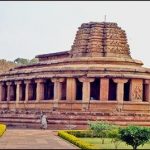
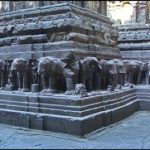
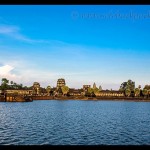
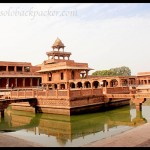
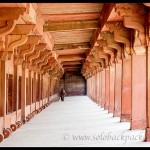
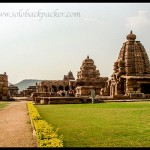
I am planning a trip to that part of India (I live in the UK) in January/February next year). I believe that Badami, Aihole and Pattadakal are well worth visiting. Any other tips? With thanks, Jenny D
Hi, That’s really good. You will enjoy these places. Try to visit Hampi (South from Badami) or Bijapur (North from Badami) or cover both. Worth visiting. Hampi is magical and attracts millions of the tourists throughout the year. Have a nice trip.
nature is wounder,god is great.
Truly Said 🙂
Hey Avanish, just commented on your Bundi trip page. Well, seems like we prefer the same roads. When were in Pattadakal? I went south in Feb-March 2011. Again borrowed a bike from a friend in B’lore, a Yamaha, and took the following route: Shivanasamudra Falls, Mysore, Bandipore, Madhumalai, Ooty, Wayanad, Coorg, Belur and Halebidu, Shravanabelagola, and back to B’lore. From there, I took a over-night bus to Hampi, and then onto Badami. Missed Pattadakal though, because of lack of time. Had a great time, overall.
So where are you planning to go next?
Regards
Hi, you had some great rides..my next plans are da series of trips…right now I am in Katra, J & K..will go to Bikaner in this month’s end, next month to varanasi, Dec to Agra n Fatehpur Sikri…n den in Jan Trekking to chamba, dalhousie n khajiyar…Bt I doubt any of this will b on bike..see u somewhere.
Hi Avanish, “see u somewhere”, sure, I look forward to that!
By the way, I’ll say (like a lot of others) you do a wonderful photography job. Great pics, esp the way you frame them, and a concise, but complete write-up. Me, I am too lazy to do anything. What camera do you use?
Katra, uh. I am based in Ludhiana. You planning a Delhi to Bikaner ride? I usually ride there from Ldh, and I rate Suratgarh-Bikaner road as one of the best rides in India. And I too plan to be in general-Raj area around Dec end.
Trekking in Jan? That would be brrrrr cold! Try the Dainkund to Jot walk/trek, if that’s possible. Not too long, fairly high for the area, maybe below winter snowline. Another option is Chamba to Kangra valley, over one of the multiple passes (e.g. Inderhara), but that’s only Summer option.
Regards,
Balraj
Hi Balraj,
Thanks for liking the pictures. Earlier, I was using Sony DSC H-10, but now I have a Canon EOS 550D. Still learning about the photography. I would love to do the recommended treks by you. Let’s see in future, and if you come to Delhi..let me know. We can meet in Delhi.
Regards,
Avanish